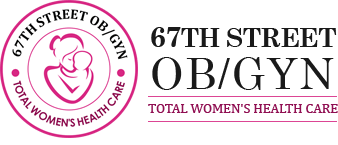In the collective consciousness, feeling an unusual lump in the breast is synonymous with cancer.
The discovery of a lump in the breast is often a source of concern and panic. Should you be alarmed right away when you feel a lump in your breast? In the majority of cases, this lump is benign. Nevertheless, it is advisable to be vigilant and to consult a gynecologist.
What are the causes of a lump in the breast?
The presence of a lump in a breast (or breast cyst) is quite common. But don’t always think the worst! There are several possible causes for a lump. Most are benign:
1.) Adenofibroma (or fibroadenoma): This is the most common benign breast tumor in women under the age of 25. The adenofibroma is a mixture of glandular and fibrous tissue. It is a firm mass, which “rolls” under the fingers, a little rubbery and well defined.
2.) The cyst: It is a small fluid-filled sac that develops in the breast. It frequently appears in women over 35 to 50 years of age. Very sensitive or painful, the development of the cyst is due to hormones regulating the ovarian cycle.
3.) Lipoma: This is a mass of fatty tissue (ball of fat), not painful, with a regular and smooth contour. It is mobile and deforms easily under the fingers.
4.) Fibrocystic nodules: Pain and sometimes calcifications may be associated.
5.) Hamartoma (soft mass).
How to recognize a breast cancer?
In the case of breast cancer, the fatty mass generally becomes harder and does not “roll”. Its contours are irregular and the ball sometimes transforms the breast.
The presence of a small, painless lump or swelling that is harder than the rest is often an indication of breast cancer.
You should see one of our gynecologist in New York immediately when you have any of the following symptoms:
- A lump or swelling in the breast;
- A lump or swelling in the armpit;
- Scaling or redness of the nipple, or a suddenly inverted nipple;
- A small indentation on the surface of the breast;
- Oozing from the nipple (water, blood, green or milky);
- An abnormally warm, red or inflamed breast;
- A small wound that does not heal well;
- A pain in the breast, a different place to the touch;
- The skin of a breast that looks like an orange peel.
Breast self-examination: a preventive measure not to be neglected
Breast self-examination is a method to detect a change in one or both breasts and to identify a suspicious mass.
The examination should be done on a regular basis to get to know your breasts: do it every month, a few days after your period ends.
You should first visually examine your breasts in different positions (arms at your side, hands on hips, arms up, leaning forward) to detect any changes in shape or skin appearance/color. Next, feel your breasts all over (including the area between the armpits and the breasts) using your middle 3 fingers:
Make small circles from the edge of the breast to the nipple,
Draw vertical lines.
This gesture will allow you to spot any unusual mass, lump or change in texture. You should also consider gently squeezing the nipples to see if any milk comes out. If you notice anything unusual, don’t panic. But do consult an OBGYN, the best Spanish-speaking gynecologist in New York, right away, especially if you have a family history of breast cancer.
What to do if you have a lump in your breast?
If you notice a lump in your breast, the first thing to do is to talk to your doctor or gynecologist in New York. He or she will perform a clinical examination (palpation of the breasts) as well as other in-depth examinations (ultrasound, mammography, fine needle biopsy, etc.). Depending on the results, he or she will direct you to the appropriate treatment. Generally, only cancerous masses require treatment: surgery, chemotherapy, hormone therapy, etc. However, when they are troublesome, benign tumors can be removed surgically.
Feel free to visit our website or contact us to make an appointment with a gynecologist in Manhattan.
